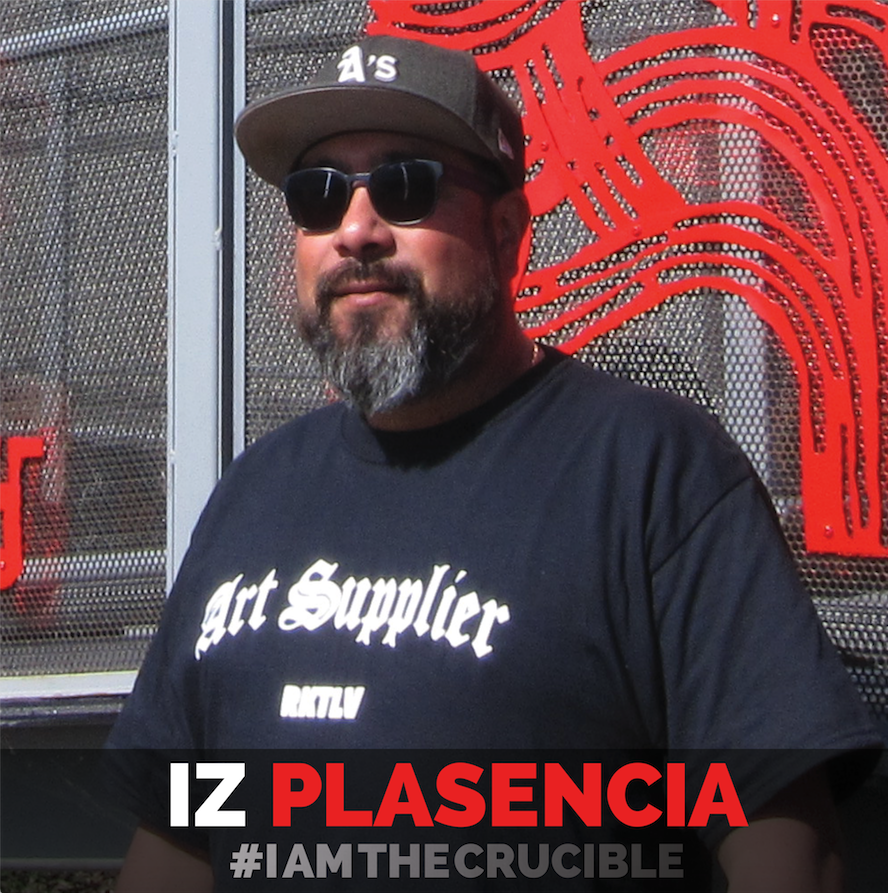by Kristin Arzt

Ismael “Iz” Plasencia first came to The Crucible to drop off his little brother for a welding class. Since then, he has never really left. Iz was working as a certified welder constructing bank vaults, and says that when he saw how The Crucible’s Youth Programs were getting Oakland youth excited about the industrial arts and making things with their hands, he knew he had to get involved.
Iz started volunteering, spending more hours at The Crucible than at his regular job. Soon he was teaching in our Welding Department, and was instrumental in expanding our Hyphy Bike Program (now known as Youth Frame Alteration: Art Bike), where youth customize and redesign bikes into functional works of art.
More than ten years later, many of the youth that Iz met in his first days here are now adults, teaching at The Crucible, attending college, and working as professional artisans, lawyers, teachers, doctors, engineers, and more. We sat down with Iz, our Youth Programs Associate for the last decade, to reflect on his years here and what he is the most proud of.
What first brought you to The Crucible?
My little brother needed a ride to a welding class so I dropped him off here and was floored by the space. I had no idea that youth programs like this existed in Oakland. That was over ten years ago. I have been here ever since.
Did you always know you wanted to work in the youth program?
The opportunity to expose kids in Oakland to the industrial arts is what I felt like my work needed to be, so I quickly started volunteering more than I was working. Something that I noticed when I first came here, and I had never really experienced before, was that there is a community where there are more people giving than taking. That was something that really touched me a lot, something that I feel like kids in Oakland need to experience. Nobody can walk through these doors without learning something. It’s absolutely impossible. Nobody walks in this building and leaves as the same person. That is something really important about the work that we do here.
What about exposing youth to the industrial arts is most valuable to them?
You can’t get away from the math, chemistry, physics, and the basic principles they are learning in school in everything we teach. It’s not about the end result but about the journey that gets you there, and being flexible when certain obstacles come up.
What is a project that you are most proud of?
In 2008, one of the first classes I taught was to build the studio ramp outside of The Crucible. We taught a youth workshop on plasma cutting for the panels on the ramp. We picked iconic Oakland images for the panels- the cranes, the eastern span of the Bay Bridge that’s no longer around, the Black Panthers… the kids went to town plasma cutting the panels. I like to remind them that making history through art is a way of living forever. As a welder you’re building things that will be around for a long time. You are creating a legacy with every bead that you lay out.
In that particular class, I remember teaching Robert Collins when he was thirteen years old, and now, ten years later, he is teaching Welding classes. Knowing that Robert, Maliq, Jazzy, Adrian and many more started taking classes here they were just kids, are now in their twenties and teaching Welding and Blacksmithing classes is the most rewarding part of my job. I get to bear witness to the transformation. Providing these opportunities for youth to step into leadership and teaching roles really brings the whole program full circle.
One word to describe The Crucible?
It’s hard to put this place in a box. We’re an art school, but it’s so much more than just an art school. It is transformative. There are a lot of emotions that I feel when I think about this space. It has played a big role in my life. It’s not “work” to come here everyday. And I get to work in the caboose!





